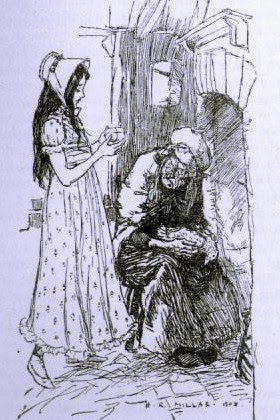Of course different approaches work for different people and everyone needs to try a variety of methods to find what works best for him or her. What follows is based on what I do at the very earliest stages of planning a novel.
Do not sit down and stare at a computer screen or blank page of a notebook.
Think of a character. Not too much detail at this stage.
Male or female?
Name? This can be changed later if it turns out not to suit him or her. For the purpose of this blog post only, let's say it's a woman called Mary.
Approximate age?
Occupation?
Setting? If it's historical, the approximate year, and whether it takes place in London, in a big town or in the country. At some point you will need to narrow it down to time of year and specific part of the country. But there's no need to do this now.
Put Mary in a situation that requires her to take some action or make a decision. This could be a fairly minor, every day situation such as being delayed on a journey, or a big life changing event.
Go for a walk, do the ironing, weed the garden. Don't consciously try to think about Mary, but if she floats to the surface of your mind, give some thought to her and the situation you've placed her in. How will she react when she discovers it? What will she do about it?
This is actually a very important part of the process. An author might be at this stage for years before putting anything down on paper or on computer. But for the purposes of this exercise, give it from a few hours to a few days.
Now sit down and write about the moment when Mary discovers the situation, showing how she reacts and what she decides to do. You might only write a paragraph, you might write several pages. It doesn't matter; whichever you do, in the end you'll have leaned something about yourself as a writer.
At some point, Mary will need to talk to someone about what has happened. Who will she talk to? Parent? Sibling? Husband? Boyfriend? Child? Friend? Employer? Someone else? How does that person react? Is he or she sympathetic or hostile? How does Mary react to that?
After some more walking/ironing/gardening, sit down and write the conversation between Mary and the other person.
Looking back over the two scenes you've written, as well as showing what the characters are doing and saying, have you shown what they're thinking and feeling? If writing a full length novel, this is something that might come at the editing stage, after the first draft was completed.
The way in which Mary dealt with the original situation, and the conversation she had about it, should have revealed something about her personality and her personal circumstances. What do you know about her now that you didn't know when you started?
You could continue to develop these ideas. What happens as a consequence of the decision or action Mary took at the beginning? What are the repercussions of the conversation she had?
Alternatively, start again with a new character and a new situation.
The aim is to experiment and to find out what comes easily - plot development or character development, narrative or dialogue - and what type of character and setting you like to write about.
Above all, the idea is to relax and let the ideas come to you!




































.jpg)
.jpg)
.jpg)
rsz.jpg)

.jpg)
.jpg)
.jpg)
.jpg)
.jpg)
.jpg)
.jpg)



